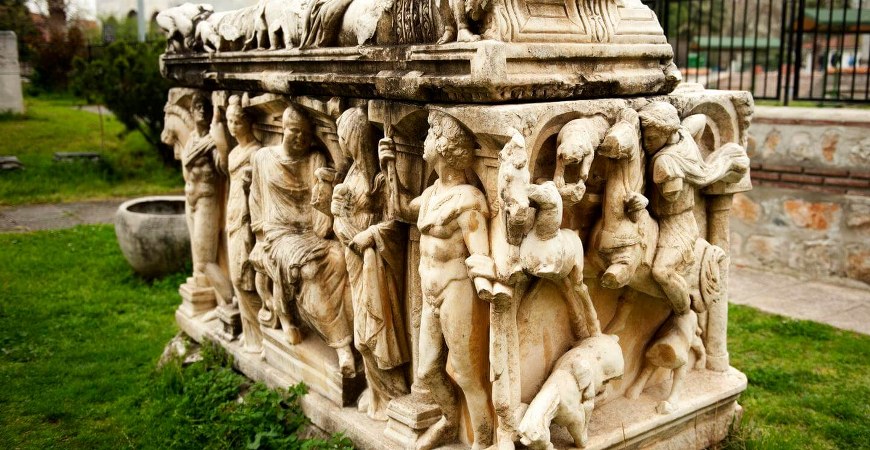Turkey Nicaea Museum,
Iznik Museum:
The Iznik Museum in the province of Bursa was first established as a depot in 1935, in the Yakup Celebi Mosque, and later moved to the Nilufer Hatun Soup Kitchen when that building was repaired, in 1960 being opened to the public. The soup kitchen was built by Sultan Murad I in 1388, in memory of his mother, Nilufer Hatun. The facade of Nilufer Hatun Soup Kitchen, which is one of the earliest examples of Ottoman architecture, has a row of hewed stone and three rows of bricks. The interior of the building consists of a central exedra joined onto the central dome, with two domed side rooms. At the front is an open colonnade covered with cradle vaults and a dome. You can check our tours from Istanbul packages.Archaeological and ethnographic works of the Hellenistic, Roman, Byzantine, Seljuk and Ottoman periods found in the Iznik region are exhibited in Iznik Museum. In the garden of the museum are sarcophagi, bas-reliefs, column capitals, building stones, styles, and Islamic gravestones, and under the colonnade are inscriptions from the pre-Islamic and Islamic periods. In the domed central section of the museum is a marble sarcophagus with garlands depicting Medusa, earthenware, and tear and perfume bottles stone axes, a bust of Zeus, heads of men and women, statuettes, and in the ethnographic section there are flintlock pistols, rose water bottles, censers, copper dishes, sherbet bowls, healing cups, manuscripts of the Koran, inscriptions, writing sets, money and tobacco pouches and embroidered napkins. In the exedra of the museum are examples of Iznik tiles, which are among the finest of Turkish tiles, Iznik china plates, and bowls. The museum has a library.
Yenisehir Semaki House:
An old Turkish house dating from the eighteenth century, situated in Yenisehir, a sub-province of Bursa, and known as Semaki House, was acquired as public property and preserved. The ceilings and wooden sections of the two-storied house are decorated with painted designs.



































































































































